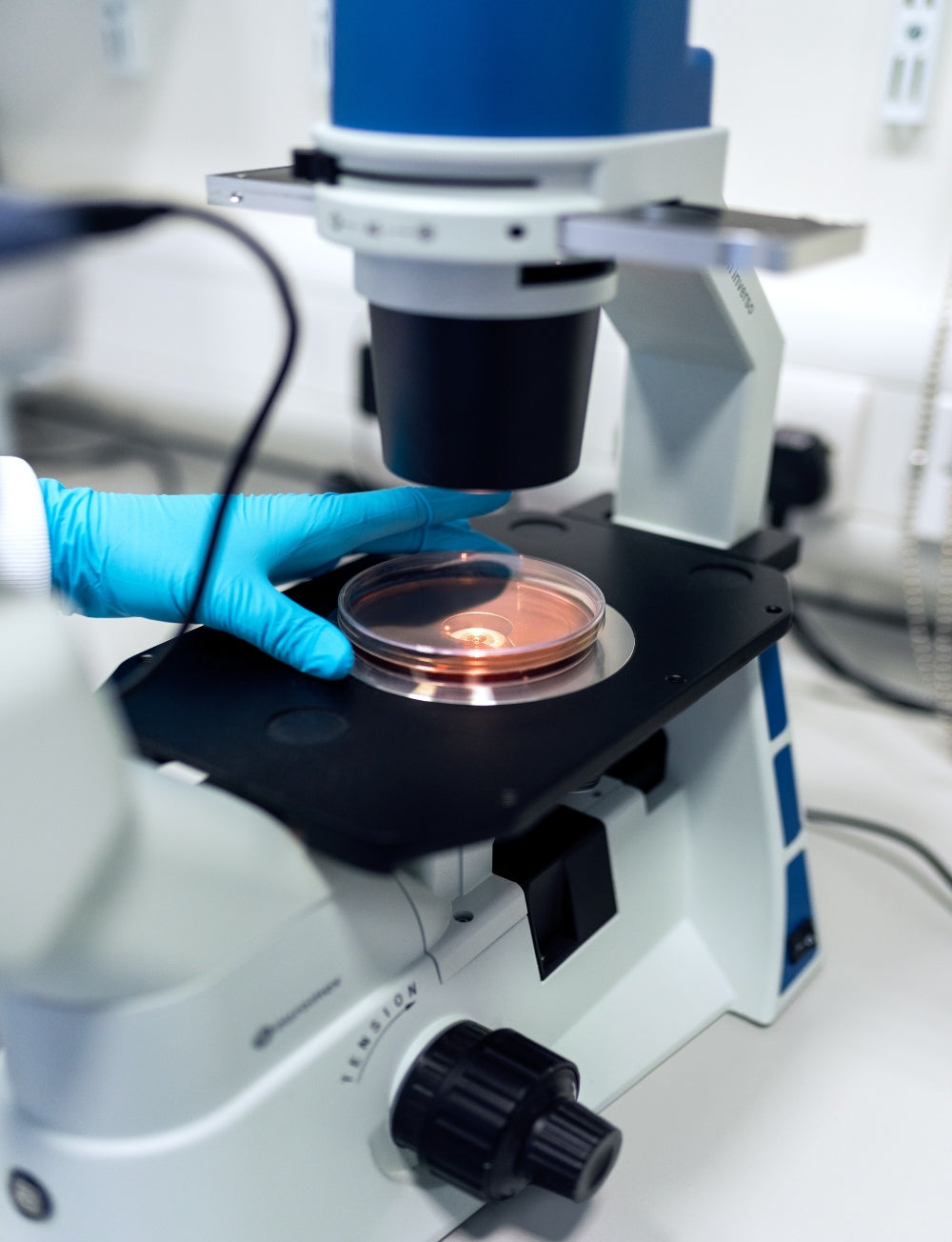
Build your nutrient reserves
Nutrition is important for FET as it supports overall health, hormonal balance, immune function, weight management, and stress management, all of which can impact the success of FET.
A frozen embryo transfer (FET) is part of the IVF process. Embryos from a previous cycle are frozen until you are ready to use them. The embryos are then thawed and placed in the uterus for implantation. The process of FET has greatly improved over the years and we are now seeing high success rates using FET.

During an FET procedure, frozen embryos that were previously created through IVF or other fertility treatments are thawed and carefully transferred into the uterus, typically after hormonal preparation to create an ideal environment for embryo implantation.
FET allows for the preservation and future use of embryos that were not transferred during a fresh IVF cycle or for subsequent attempts to achieve pregnancy without going through the entire IVF process again.
FET has become a common technique in reproductive medicine, offering the opportunity to conceive with frozen embryos that were previously created, and providing more flexibility in managing your fertility journey.

Nutrition is important for FET as it supports overall health, hormonal balance, immune function, weight management, and stress management, all of which can impact the success of FET.

Consider the small changes you can make to set yourself up for success. Quitting smoking, reducing caffeine and alcohol intake are great places to start. Exercising regularly is a great option too.

For those going through FET, we recommend taking our Frozen Embryo Transfer support pack which contains all the nutrients your body needs through this time, including your essential prenatal vitamins such as 400mg of folic acid in the active form folate.

FET can be a stressful time, therefore it is important to do everything you can to reduce and manage this as much as possible.
FET is typically performed using a process called cryopreservation, where embryos that were not used during a previous fresh IVF cycle are frozen and stored at very low temperatures. When ready for FET, the frozen embryos are thawed, and one or more embryos are transferred into the uterus using a thin catheter. The procedure is usually done in an outpatient setting and does not require anesthesia.
Success rates of FET can vary depending on various factors such as age, the quality of the embryos, and the fertility clinic's expertise. However, generally, FET success rates are comparable to fresh embryo transfer success rates
Preparing for an ICSI cycle typically involves similar steps as preparing for traditional IVF, including monitoring and optimising your overall health, managing medications as prescribed, building your nutrient reserves and making any lifestyle changes (such as stopping smoking) that can help set you up for success. Your fertility specialist will provide you with specific instructions tailored to your individual needs.
We recommend our Frozen Embryo Transfer Pack. This pack contains all of the supplements we recommend for those undergoing FET.

It can be difficult to know which supplements to take throughout your fertility journey. Our product recommendation quiz will inform you of the best products to take for your specific stage.